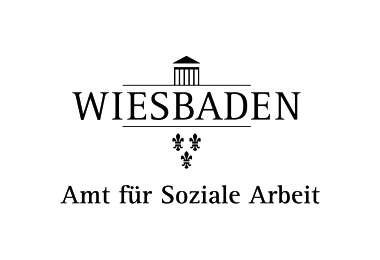Astrid Lembcke-Thiel, Curator of Learning and Public Engagement, presents her current project, Collection Fever.
Collecting is an instinctive impulse in children. As they play, something captures their imagination and they begin to collect. Given that amazement and enthusiasm are the keys to deeper engagement with any topic, the childhood activity of collecting can be seen as the starting point from which aesthetic experience develops.
The Collection Fever project is all about this way of learning through play.
Children collecting – collection challenge: All things yellow!
Collecting is, after all, both a social practice and an anthropological constant, to do with creating meaning through exploring with the senses and constructing order by making connections. But collecting is also an aesthetic activity, developed in early childhood and originating in play—an attempt to productively decode the world and its phenomena. That’s why collections always reveal something about their collectors, why they are like miniature blueprints of the world. Think of early childhood collections of objects found in nature, ‘collages’ culled from magazines and other pop-culture ephemera, Baroque cabinets of curiosity, criteria-based museum collections. Self-reflective learning portfolios and scientific documentation also belong to this category (see Kekeritz/Schmidt/Brenne 2016).
Kekeritz, Mirja / Schmidt, Bärbel / Brenne, Andreas (2016): Vom Sammeln, Ordnen und Präsentieren: Ein interdisziplinärer Blick auf eine anthropologische Konstante. Munich: kopaed.
And now this! The coronavirus crisis has completely cut off actual contact with the art and natural-history collections at Museum Wiesbaden! So, what now? This was the question underlying our discussions with the Department for Pre-School Education at the Office for Social Security. Given that teachers are phoning or video-calling children and parents every week, how could the existing cooperation between the museum and the city’s nursery schools help to enrich the educational content of this contact during our current, radically altered reality? The potential synergy of nursery schools and museums as places of education has already been successfully exploited for many years in various collaborative formats and projects. Our experience in this area prompted us to develop the idea of promoting the cultural activity of collecting within the children’s own living environment, and, through that, to enable connections with places of education beyond their familiar surroundings which they are unable to visit because of the pandemic.
“We’ve got really carried away and are now seeing yellow objects everywhere!!”
“It has been such fun! Thank you, Education Department, for a marvellous project! Lukas is already excited about the next collecting challenge on Monday!”
“Your project is a ray of light in these dark times!”
These are some of the messages we’ve received from parents who have caught ‘collection fever’ along with their children. That wasn’t just an unintended collateral risk, but a specific aim of the project Collection Fever: Collecting Connects – So What Are YOU Collecting?
As the pictures and comments sent in by parents clearly show, searching for collection objects nourishes inquisitive minds, helping to pass the time and enrich the everyday experience of children and parents while they are confined within much narrower surroundings than usual.
The project offers an opportunity to stop, look, and wonder together, and combats cabin fever with a fever of a much healthier kind. What can be discovered and explored simply by looking for things that are alike? What connections are there between my own discoveries and the discoveries at Museum Wiesbaden?
Of course, the culture of collecting is fundamental to Museum Wiesbaden; after all, it is thanks to the collecting activities of many patrons such as Baron Johann Isaac von Gerning, Hannah Becker vom Rath, and Ferdinand Wolfgang Neess, that its extensive collections exist and continue to grow, even today.
The project Collecting Fever: Collecting Connects – So What Are YOU Collecting? involves a new collection challenge being set every Monday. At the end of the week we show our own collection, drawn from our art and natural-history exhibits.
It’s also an exciting experience for us, not only to see what the young collectors discover but also to see our own collections from new perspectives.
And because nothing can replace real encounters with real exhibits in real space, we’re already looking forward to the Collection Fever: Collecting Connects exhibition planned for the autumn, where we’ll be showing images of the children’s collections, based on all ten of the collection challenges, in the Edu Forum’s display area. For we’re in no doubt that
COLLECTING CONNECTS!
Astrid Lembcke-Thiel, Curator of Learning and Public Engagement
Translated by Lance Anderson
 |
 |
Noch bis zu den Sommerferien gibt es jeden Montag eine neue Sammelidee auf der Homepage des Museums, ebenso wie die dem Thema entsprechend ausgewählten Objekte und Exponate aus den Museums Sammlungen von Kunst und Natur, die 12 kuriosesten Einsendungen der kindlichen Sammlungen und weitere Informationen.
Die Abteilung Kindertagesstätten im Amt für Soziale Arbeit hat extra eine Homepage für die Zeit der Pandemie bedingten räumlichen Trennung eingerichtet, auf der das Projekt unter der Rubrik Netzwerke zu finden ist.
https://du-gehoerst-zu-uns.de/
https://de-de.facebook.com/museum.wiesbaden/
https://www.instagram.com/museumwiesbaden/?hl=de